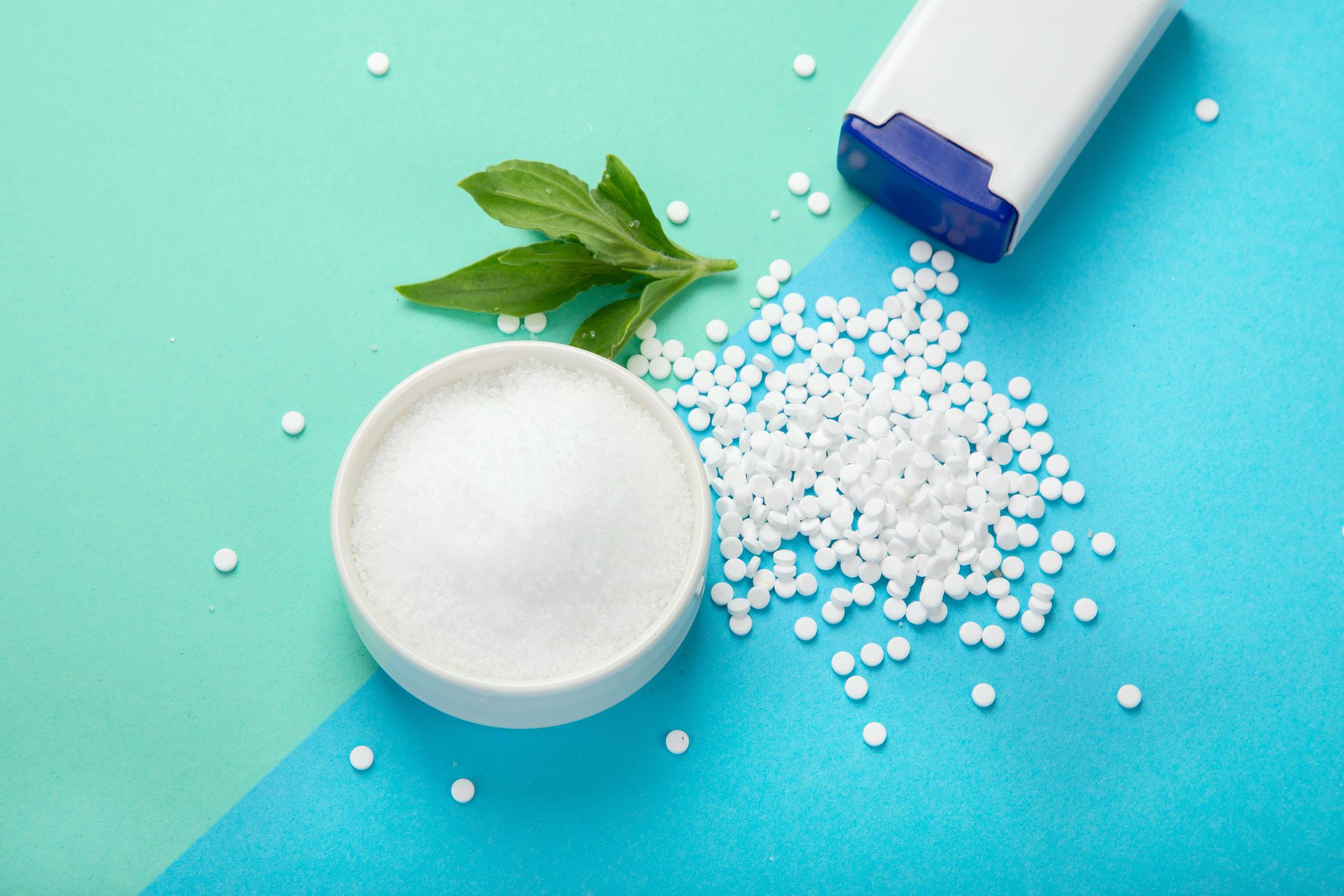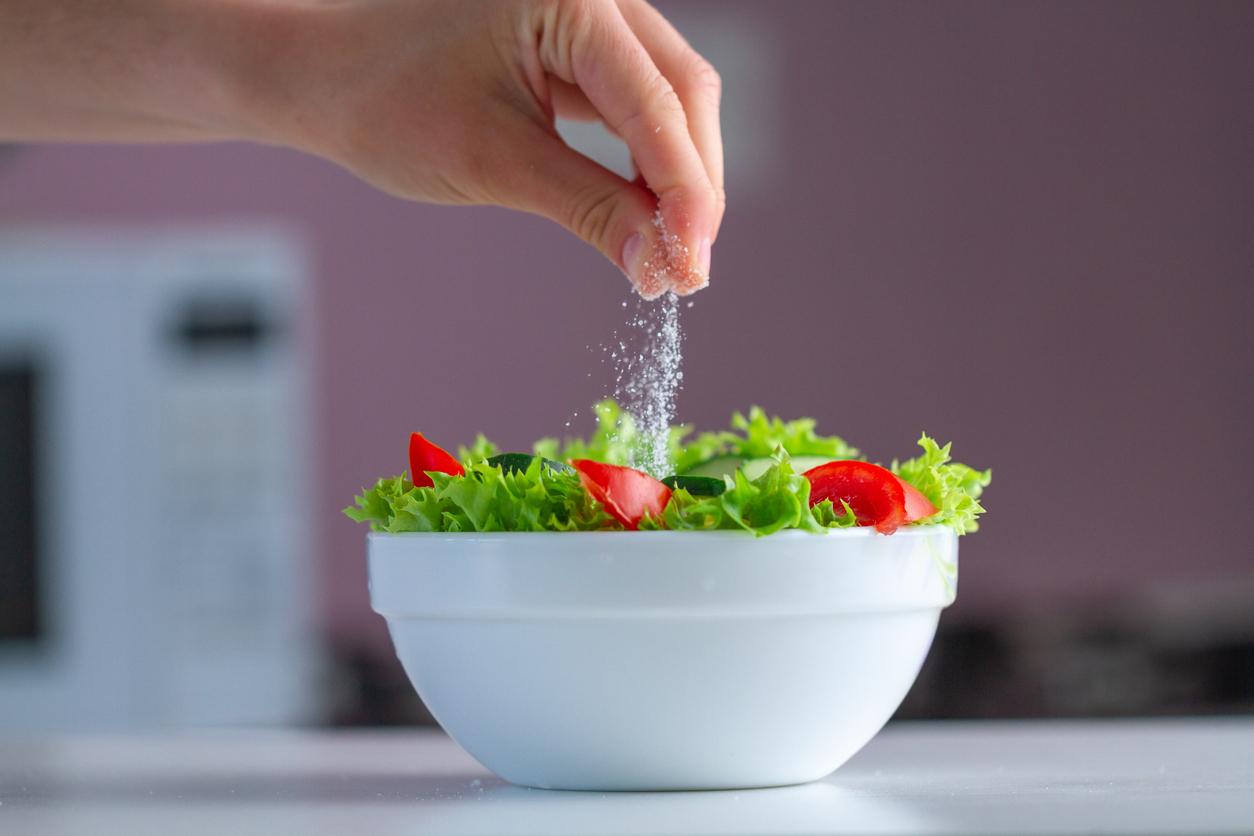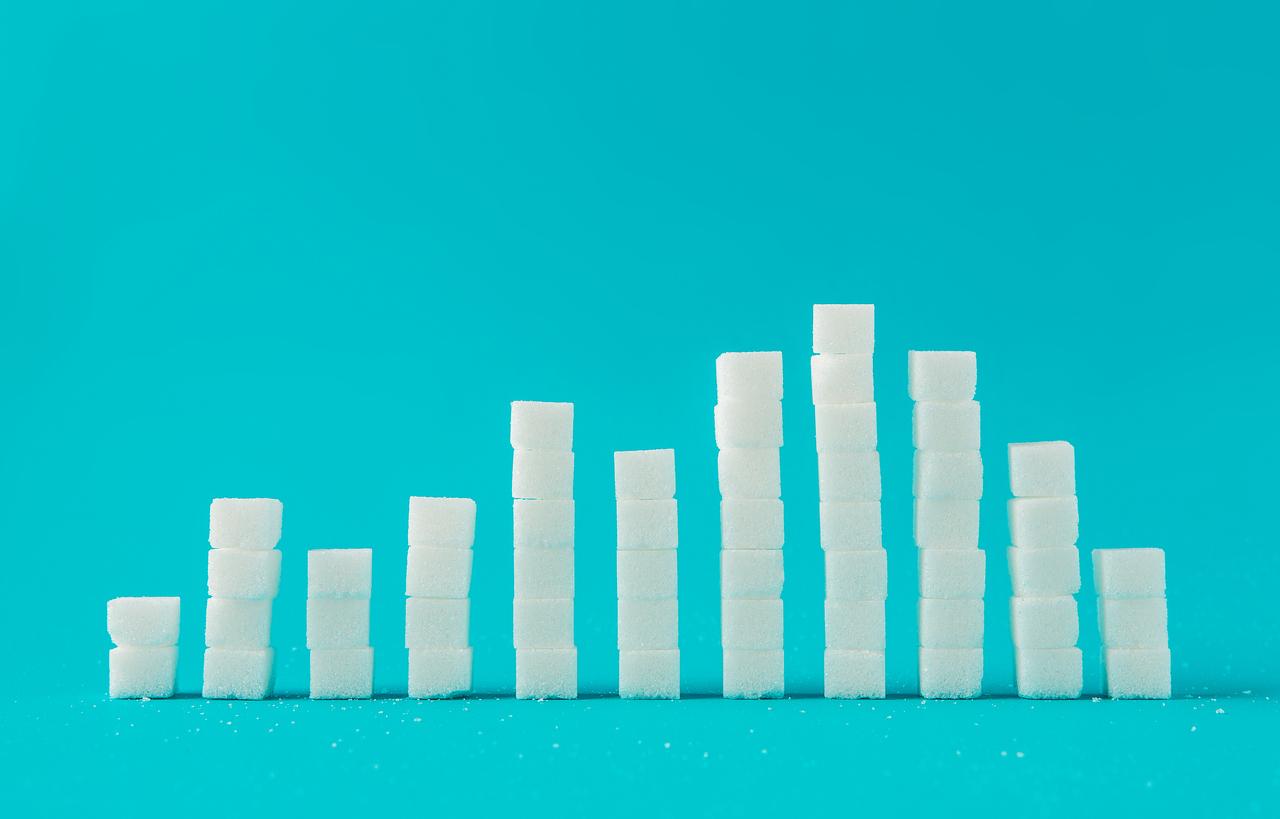A mixture of mineral salts could promote the sensation of sugar in the mouth and reduce the aftertaste present in certain sweeteners.

- Sweeteners in low calorie foods or beverages usually give an aftertaste that lingers in the mouth for a long time.
- Scientists have found that certain mineral salts could give a taste similar to sugar to these non-caloric substitutes.
- A mixture of potassium, magnesium and calcium salts increased the sweetness in the mouth of 10 non-caloric sweeteners.
Typically used in zero or low calorie sodas or candies, natural or synthetic non-caloric sweeteners like stevia or aspartame don’t have the same mouthfeel as real sugar. Moreover, this taste often persists long after tasting.
Sweeteners: mineral salts could accelerate the appearance of the sweet taste
To solve this problem, Grant DuBois, an American researcher, and his team suggested adding mixtures of mineral salts, so that the taste of non-caloric sweeteners is closer to real sugar. The results of their work have been published in the scientific journal Journal of Agricultural and Food Chemistry.
Before proposing this alternative, scientists had found that sodium chloride and potassium chloride could accelerate the appearance of the sweet taste and eliminate its persistence for rebaudioside, a compound of stevia. According to them, these two types of salt managed to compress the hydrogel of mucus that covers the taste buds, in order to allow the molecules of rebaudioside to pass through and fade more quickly. However, they observed that high concentrations of sodium chloride and potassium chloride were required to provide sweetness and suppress the aftertaste present in sweeteners. The researchers therefore wanted to test other mineral salts, in order to obtain confirmation of their hypothesis.
A mixture of mineral salts to remove the aftertaste present in sweeteners
During this research, scientists noticed that calcium chloride, magnesium chloride, and potassium chloride each separately reduced the perceived intensity of rebaudioside. But large quantities of each mineral salt were required to diminish the intensity of the persistent taste of the substitutes. These high concentrations of mineral salts have led to unpleasant sensations of salinity or bitterness.
In a second step, the researchers therefore mixed different mineral salts together. This action had a synergistic effect. Volunteers were then able to taste the different mixtures. According to the study’s findings, a mixture of potassium, magnesium and calcium salts reduced the lingering sweet taste by up to 79% and increased the sweetness in the mouth of ten non-caloric sweeteners . In particular, tasters noted that these blends gave better flavor to zero-calorie and low-calorie drinks.

















